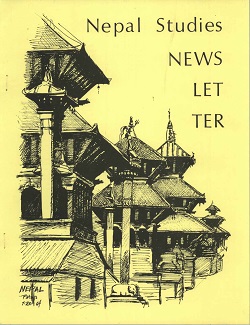Author Biography
Tawni L. Tidwell (PhD, Anthropology, Emory University, 2017; TMD (Kachupa-equivalent Menpa), Tibetan Medical College, Qinghai University, 2015) is a Tibetan medical physician and biological and cultural anthropologist. She was a postdoctoral fellow with Project RATIMED (Reassembling Tibetan Medicine) at the Institute of Social Anthropology, Austrian Academy of Sciences, and with the FWF Potent Substances Project at University of Vienna. Her work focuses on pharmacological innovations in Tibetan medicine and training practices in medicine compounding. Her doctoral work detailed the entrainment process for learning Tibetan medical diagnostics of Tibetan medical conceptions of cancer and related metabolic disorders. Tidwell is dedicated to facilitating dialogue and collaborations between Tibetan medicine and Western science traditions, and maintains a private clinical practice.
James H. Nettles (PhD, Molecular Pharmacology, Emory University, 2005; Post-doctoral Fellow, Novartis Institute for Biomedical Research, Cambridge, MA) specializes in relating molecular structures to biological function. He is past-director of drug-discovery modeling at the Laboratory of Biochemical Pharmacology, Emory University School of Medicine. His ongoing collaborations with academic and industry partners combine biomedical informatics and chemical structure modeling to explain drug activities and acquired resistance/selectivity profiles for natural product extracts as well as synthetic drug monotherapies used to treat cancer and diverse viral diseases. He studies molecular mechanisms of multi-component formulations, and is also involved with clinical studies of wellness-oriented body/ mind therapy interventions such as massage, yoga, and cognitive training.
Abstract
Sowa Rigpa institutions and practitioners have growing interest in examining and legitimizing Sowa Rigpa formulas vis-à-vis pharmacological research methods, seeking scientific validation of what they view as ‘potency’ and ‘purity’ for their formulas. Likewise, the pharmacology researchers have demonstrated renewed interest in herbal medical traditions in mining for new drugs to address resistance, toxicity, and optimize what they view as ‘potency’ and ‘purity.’ However, differing conceptualizations emerge when the pharmacological drug discovery process is examined to determine what is being analyzed, how it is doing so, and what assumptions underlie such methods. Whether a formula is ‘active,’ ‘toxic’ or ‘effective’ hinges on assumptions, processes, and methods that typically have low fidelity to how Sowa Rigpa formulations function from the Tibetan tradition’s perspective and are actually administered to patients. This paper argues that standard mainstream biochemical pharmacology screening methods may not be suitable for analyzing Sowa Rigpa formulas, as they are traditionally compounded and understood to function in concert with multiple physiological pathways, rather than one specific target. We examine the pharmaceutical research processes to identify points of adherence and divergence with conceptions of ‘potency’ and ‘purity' in Tibetan medical theory, and believe pharmacological research institutions will be receptive to traditional Sowa Rigpa menjor (sman sbyor), or ‘medicine compounding,’ theory due to benefits it could provide biomedical drug discovery via complementary understandings of compound synergy and distinctly different concepts of toxicity and purity. Accordingly, we suggest that efficacy, activity and safety of Tibetan medicinal formulas will be more accurately assessed by retaining fidelity to its own conceptions of potency and purity.
Acknowledgements
The co-authors thank Geoffrey Samuels, Barbara Gerke, Jan van der Valk, Stephan Kloos, Cassandra Quave, David Lynn, Michael Iuvone, James Lyles, Yushi Bai, Jamyang Gyatso, Khenrab Gyamtso, Jonathan Samuels and Tashi Dawa for valuable discussions. Parts of this paper were presented in 2015 at the 1st Annual Tibetan Medicine Specialty Committee WFCMS Conference in Xining, Qinghai Province and 4th International Traditional and Modern Medicine Conference in Xishuangbanna, Yunnan Province (PRC), as well as in 2017 at the Mind-Body Health in Tibetan Medicine Conference at Harvard Medical School in Cambridge (MA, USA). The co-authors thank those who provided feedback at these conferences, as well as the anonymous reviewers. TT was funded by the ERC Award Number 336932 (Project RATIMED) at the Austrian Academy of Sciences and the Austrian Science Fund (FWF) Grant Number P30804-G24 at the University of Vienna.
Creative Commons License

This work is licensed under a Creative Commons Attribution-Noncommercial-No Derivative Works 4.0 License.
Recommended Citation
Tidwell, Tawni L. and Nettles, James H.. 2019. Conceptions of Potency, Purity, and Synergy-by-Design: Toward Developing a Sowa Rigpa Medical Theory-based Approach to Pharmaceutical Research. HIMALAYA 39(1).
Available at:
https://digitalcommons.macalester.edu/himalaya/vol39/iss1/17
Supplemental Table 1.


